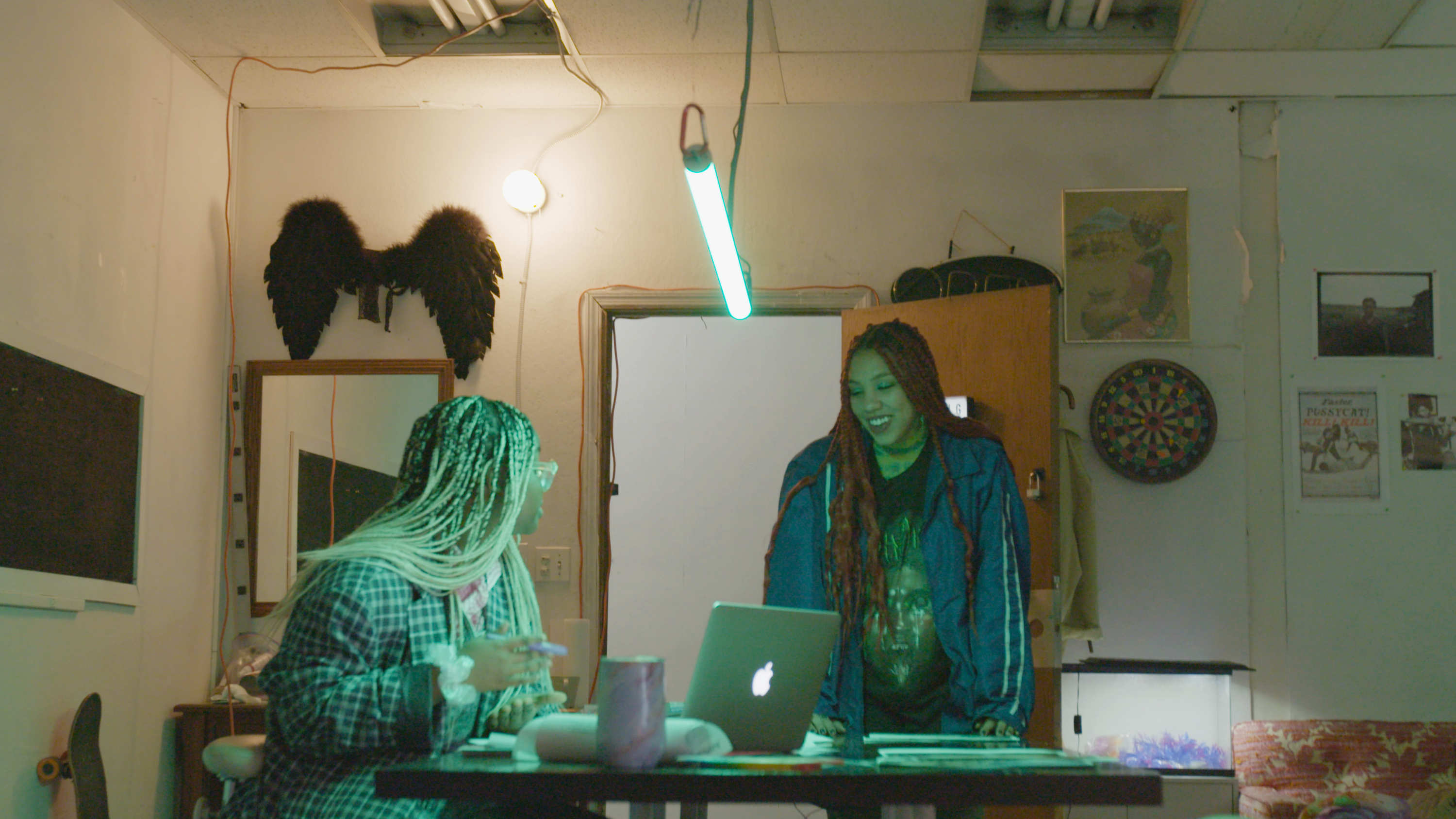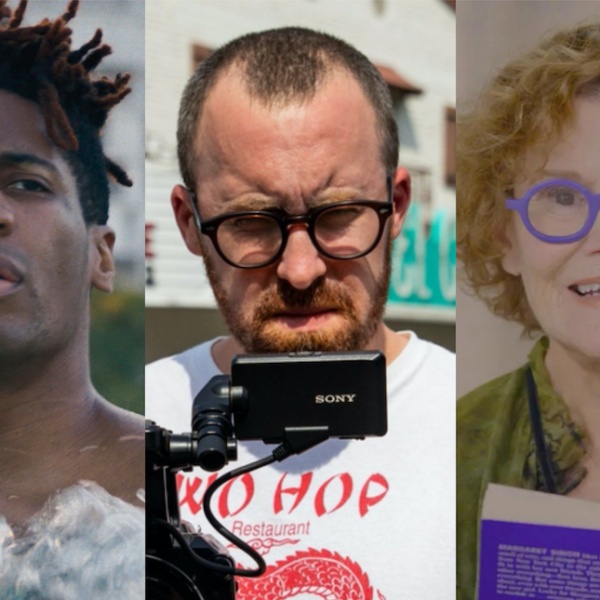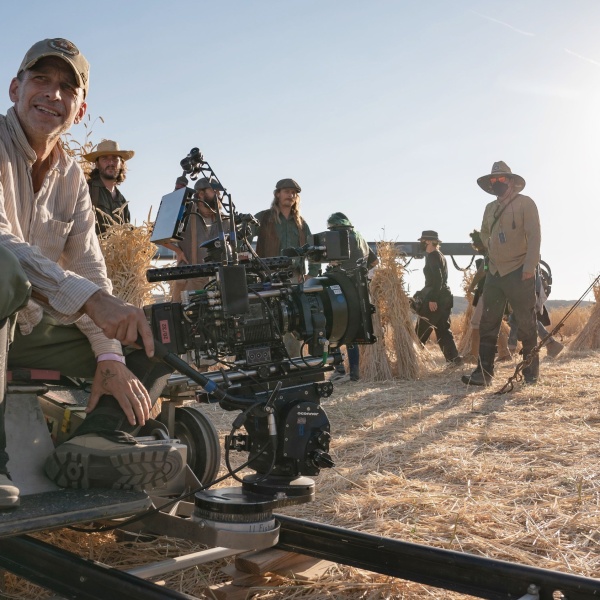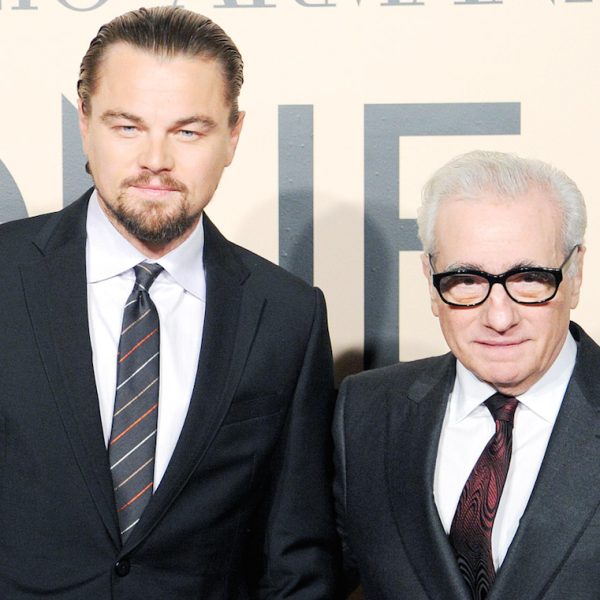If you learned to type in the 1980s or ’90s, there’s a decent chance you had some help from Mavis Beacon. The fictional avatar was the face of Mavis Beacon Teaches Typing, a bestselling series of instructional CD-ROMs that helped make computers more accessible for a generation of keyboard novices.
While there was never an actual human being named Mavis Beacon, the likeness of Haitian model Renee L’Esperance was featured on the cover of the software. Ironically, the fictional typing instructor became one of the first major Black female faces in the famously white and male tech industry. The question of who the woman we know as Mavis Beacon actually is — and what she has been up to — fascinated filmmaker Jazmin Jones and self-described “cyber doula” Olivia McKayla Ross. After meeting during a guest lecture at the School for Poetic Computation in 2019, the two women decided to collaborate on a documentary that aimed to give Mavis Beacon’s legacy back to the woman who played her.
Their new film “Seeking Mavis Beacon” sees Jones and Ross putting on their “e-girl detective” hats to search for the models who loaned their likenesses to the typing software. But their journey to finding L’Esperance led them down a series of ethical rabbit holes that forced them to question what you do when the subject of your search doesn’t want to be found.

In a recent conversation with IndieWire, Jones and Ross opened up about their genre-bending search for the mysterious software avatar.
“The first conscious thought I had about Mavis Beacon was why was she Black? I Googled her, as one does when you have a question,” Jones said. “That’s really when I first was like, oh, no one’s ever spoken to Renee. I can’t find any interview with her on the record. That must just be because nobody has tried. I can get to the bottom of this. Now, coming up six years later, I realized that that was a bigger question than I thought.”
The search for Mavis Beacon led the detectives to learn that multiple women had played the eponymous typing instructor at various points, but the face that most people associate with her is L’Esperance’s. As they sought contact with the model, they learned that her relationship with the Mavis Beacon project had ended on bad terms due in part to her lack of compensation for future editions of the software that bore her face. As it became clear that L’Esperance had gone to great lengths to ensure that her involvement with the typing franchise was forgotten, Jones and Ross began to question who they were actually trying to help by bringing her back into the public consciousness.

The questions raised by the film are very unique to the 21st century, and it appropriately explores them via some cutting edge filmmaking techniques. Some of the most notable moments in the film didn’t actually happen at all, as Jones and Ross cleverly spliced together old audio clips to make it seem as if the likes of Barack Obama and Halle Berry were opining on Mavis Beacon’s legacy during major historical moments. Their original plan was to blend fiction and reality even further and create an elaborate mythology for the fictional typing instructor. But as they waded into the character’s complex history, they began to suspect that such an artistic choice would only add to the sense that the woman behind Mavis wasn’t actually in control of her own legacy.
“Initially, five, six years ago, we were like, oh, we’re going to create a fake backstory for Mavis Beacon. We have so few images of Black women in technology that we need her to have a more nuanced history,” Jones said. “That was our plan until we learned about Renee’s own relationship to privacy. We realized that any kind of backstory that we put onto Mavis Beacon would be projecting even more things onto this legacy that is directly tied to Renee. Unless Renee was truly a collaborator in that process, then it wouldn’t feel good.”
Jones and Ross weren’t entirely ready to abandon their interest in deceiving their audiences, but their pivot forced them to put their talents for digital misdirection to different uses. Rather than create new facts, they used clever editing techniques and misinformation to obscure the details of their search. It was all done with the hope that their film would never be used as a tool for violating L’Espérance’s privacy in the future.
“What happens on camera is what actually happened to us, but the hybridity is in us trying to redact information and conceal things,” Jones said. “Sometimes we’re in a city, and we’re showing you B-roll from another city. So the hybridity is actually in concealing and covering up the traces of the steps that we took to get to Renee, in hopes that if any other armchair detective is like, oh, they left a stone unturned, it is actually really difficult for them to mimic our workflow.”
Both Jones and Ross will be quick to tell you that they never expected their five year search for Mavis Beacon to end the way it did. Their finished product is more than just a detailed look into a forgotten chapter of Black technology history — it’s a repudiation of the commonly accepted entertainment industry wisdom that showing somebody’s experiences on screen is an inherently good deed in any context.
“I really believed at the beginning of this process that the most generous thing you could do as an archivist and a filmmaker is to give somebody a platform,” Jones said. “I believed that the reason that we haven’t seen a definitive film or interview with the official Mavis Beacon is because nobody was asking the right questions, or people like Olivia and I weren’t asking, and that we would show up and everything would shift… I’ve learned that actually there are limitations to representation, and that sometimes, taking your own image back is the most radical thing that you can do.”
What was the biggest lesson that Jones learned from her half decade filmmaking journey? Maybe Renee L’Espérance had the right idea about her privacy.
“Just because you have a story doesn’t mean that you have to share that story with precocious strangers,” she said with a laugh.
A Neon release, “Seeking Mavis Beacon” is now playing in select theaters in New York City. It will expand to Los Angeles on September 6, and nationwide in the following weeks.






